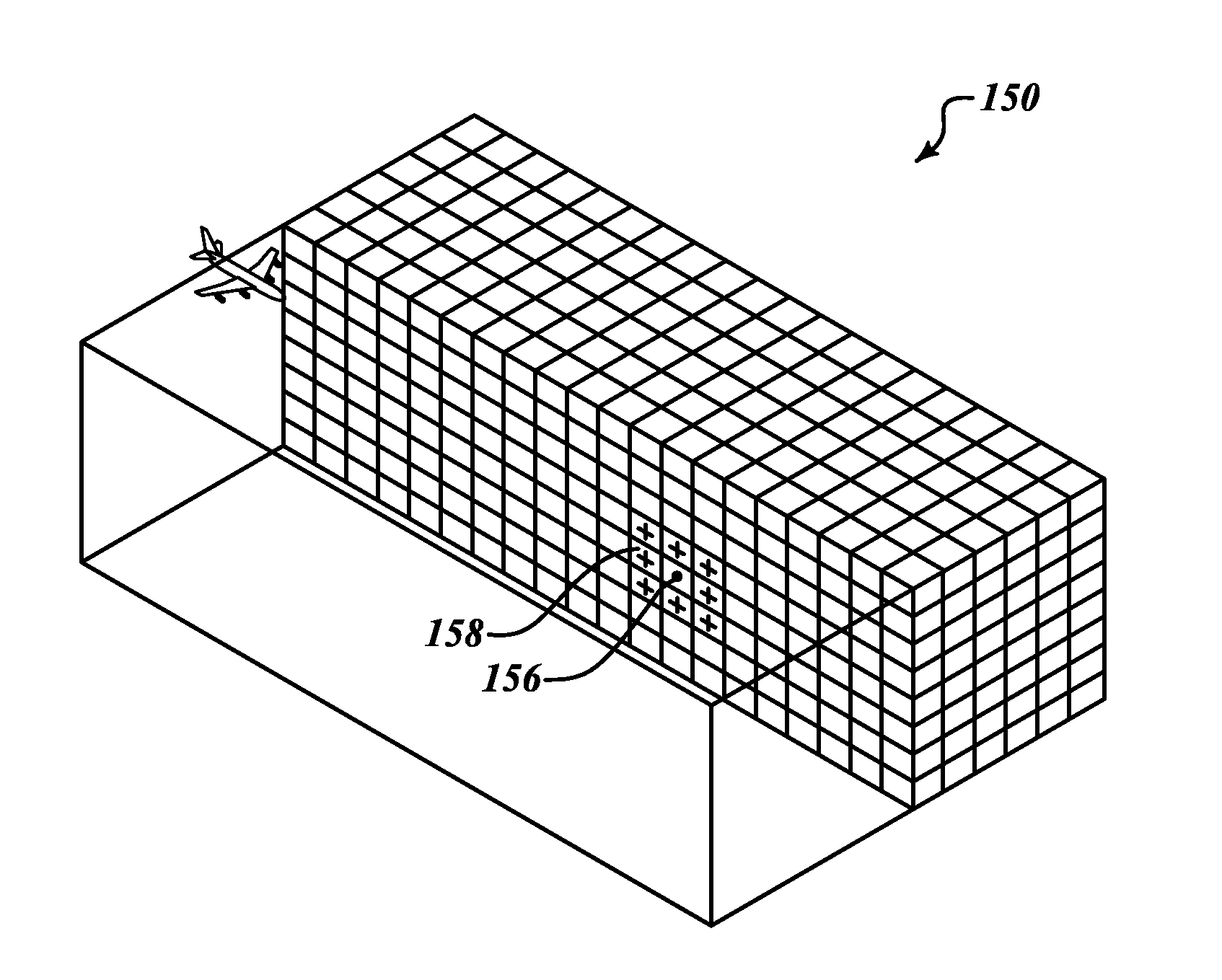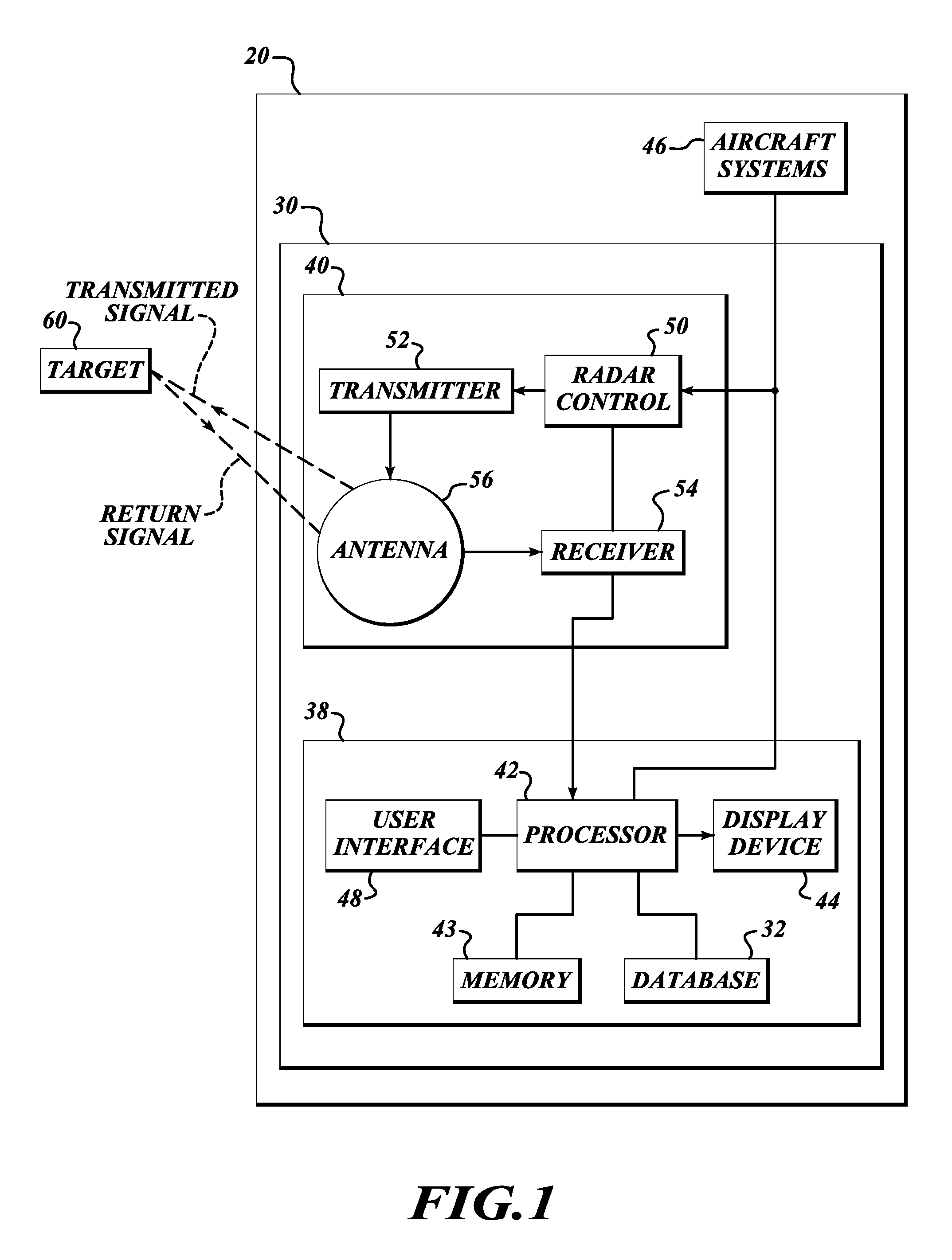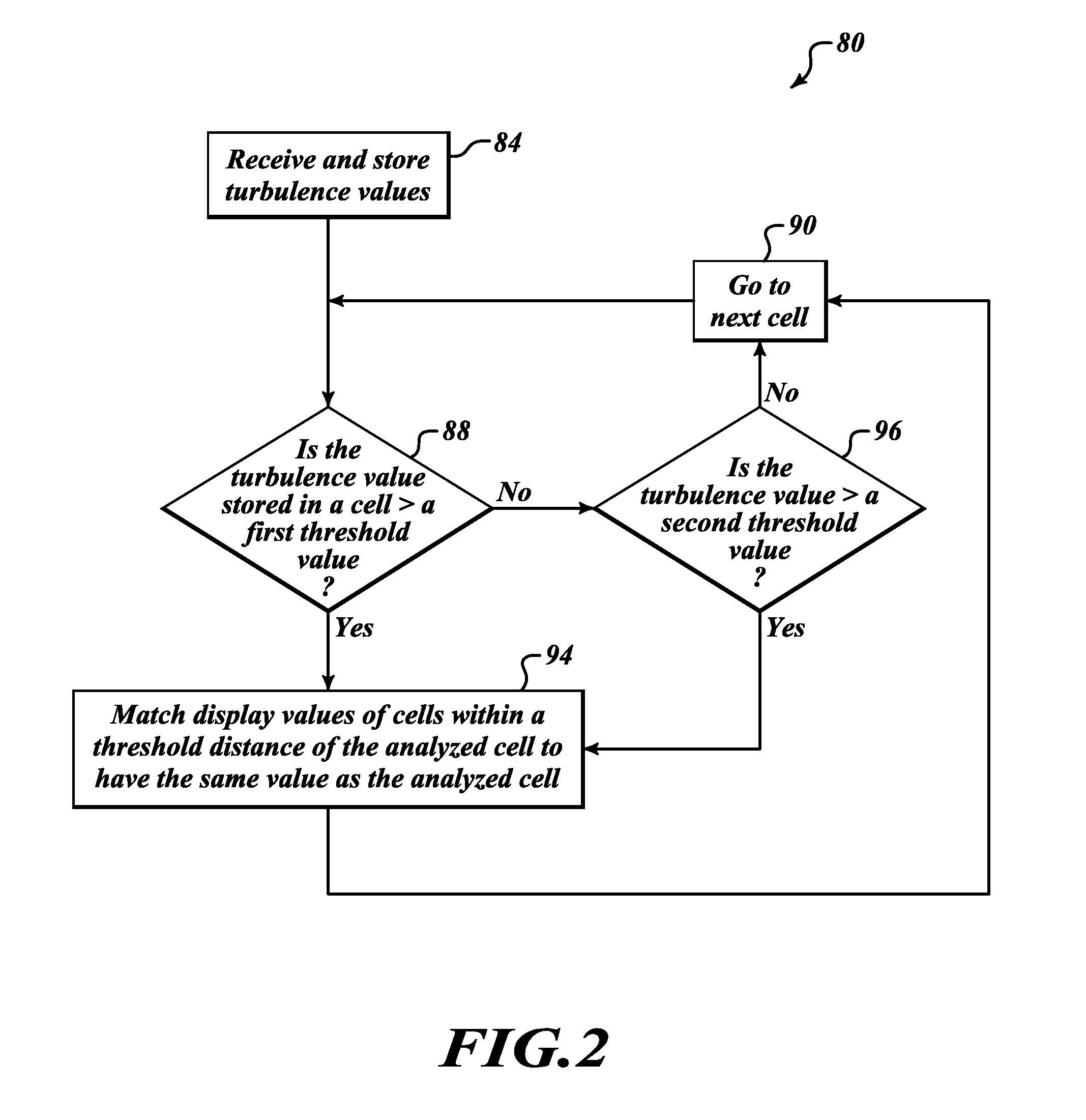Inference of turbulence hazard from proximity to radar turbulence measurement
a turbulence hazard and radar technology, applied in the direction of instruments, meteorology, clear air turbulence detection/forecasting, etc., can solve the problems that the intensity of high-intensity turbulence experienced by aircraft cannot always be spatially coincident, and aircraft are sensitiv
- Summary
- Abstract
- Description
- Claims
- Application Information
AI Technical Summary
Benefits of technology
Problems solved by technology
Method used
Image
Examples
Embodiment Construction
[0009]FIG. 1 illustrates an exemplary aircraft 20 having a weather display system 30 for providing improved radar returns. The exemplary weather display system 30 includes a weather radar system 40 and a display / interface front-end 38, and receives information from an aircraft system 46. The display / interface front-end 38 includes a display processor 42, memory 43, a display device 44, a user interface 48, and a database 32. An example of the radar system 40 includes a radar controller 50 (coupled to the user interface 48), a transmitter 52, a receiver 54, and an antenna 56. The radar controller 50 controls the transmitter 52 and the receiver 54 for performing the sending and receiving of signals through the antenna 56. The weather radar system 40 and the display / interface front-end 38 are electronically coupled to the aircraft system 46.
[0010]Radar relies on a transmission of a pulse of electromagnetic energy, referred to herein as a signal. The antenna 56 narrowly focuses the tran...
PUM
 Login to View More
Login to View More Abstract
Description
Claims
Application Information
 Login to View More
Login to View More - R&D
- Intellectual Property
- Life Sciences
- Materials
- Tech Scout
- Unparalleled Data Quality
- Higher Quality Content
- 60% Fewer Hallucinations
Browse by: Latest US Patents, China's latest patents, Technical Efficacy Thesaurus, Application Domain, Technology Topic, Popular Technical Reports.
© 2025 PatSnap. All rights reserved.Legal|Privacy policy|Modern Slavery Act Transparency Statement|Sitemap|About US| Contact US: help@patsnap.com



